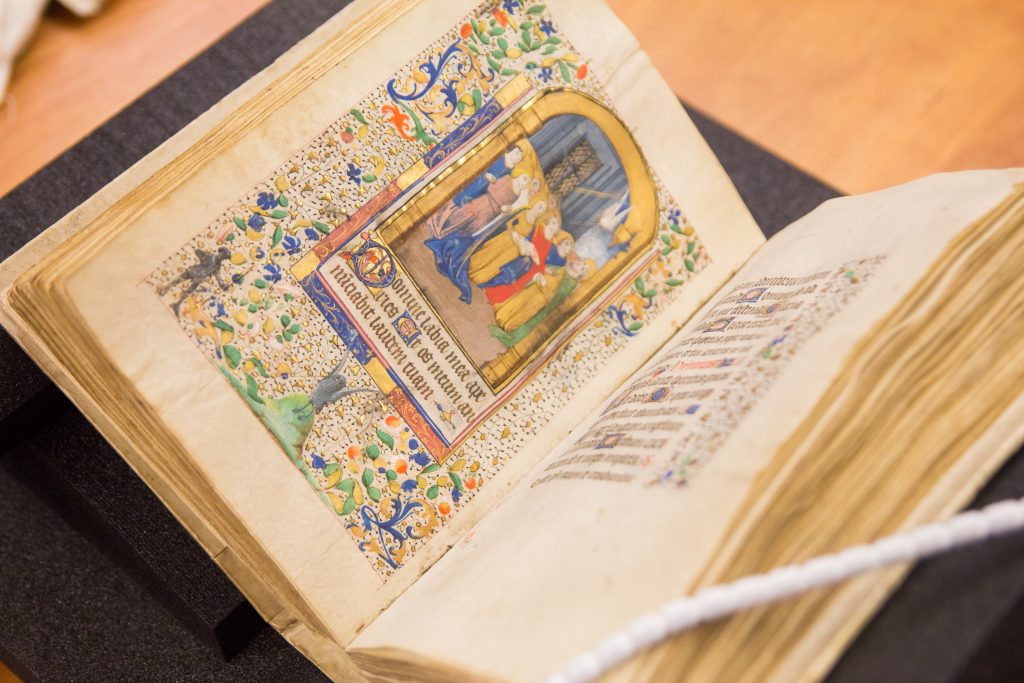The Binghamton University Center of Medieval and Renaissance Studies (CEMERS), BU Special Collections and University Libraries have acquired two 15th-century books on biblical scenes, the first of their kind that BU has obtained.
The books of hours, or personal prayer books, titled “Use of Paris” and “Use of Langres,” are handwritten medieval manuscripts from France featuring miniatures that depict biblical scenes, readers’ notes from centuries of use and historiated initials beginning each prayer. This is the first time these manuscripts are being studied by the public eye.
According to Bridget Whearty, a leader in acquiring the manuscripts and an assistant professor of English and medieval studies at BU, books of hours were widely available during the Middle Ages. However, these manuscripts were produced before mass printing and are all handwritten, deeming the 500-year-old texts rare to 21st-century scholars.
Whearty wrote in an email that these books of hours were tools of prayer used frequently throughout the day.
“A book of hours is a tool that people tried to use to achieve lives of action, in the world and contemplation,” Whearty wrote. “They were portable guides, tools you could carry through the day, to pause seven times over the course of your day at regular set intervals to contemplate the great mystery of your faith tradition and your place in the cosmos.”
Whearty noted that the books exhibited signs of wear and damage over the years. Marilynn Desmond, another leader in acquiring the manuscripts and a SUNY distinguished professor of English, wrote in an email that she believes that some of the wear is attributed to the extent of personal devotion, including kissing pages that were meaningful to readers, over the course of centuries.
Whearty emphasized the uniqueness of the texts and their significance in surviving to the 21st century.
“The important thing to understand when working with real medieval books is that every manuscript is different,” Whearty wrote. “Each is the product of human hands, working before mechanical production. Every letter is written by hand. Every picture is carefully drawn. Even the writing support on which they were written had to be made by hand, either by creating parchment from animal skin or by creating paper from cloth rags.”
Desmond helped organize the purchase of the manuscripts last December at Christie’s Auction House in London. The manuscripts, which are now placed in BU Special Collections, will be available for students and faculty to read and study. Desmond wrote that the texts will be placed next to other medieval books of hours for use.
“Any student or faculty member can, at any time, make an appointment with the Special Collections staff to examine materials in the collection, including these two manuscripts, as well as the other two medieval manuscripts we own,” Desmond wrote. “These manuscripts are available for study and consultation by the entire Binghamton community.”
Whearty wrote that the acquisition of these books will help further research at the University.
“Owning our own books, books that have never been studied or written about before, opens up real and meaningful research opportunities to students working in the humanities,” Whearty wrote. “I’m tremendously excited for the work that Binghamton students will be able to do on these.”



